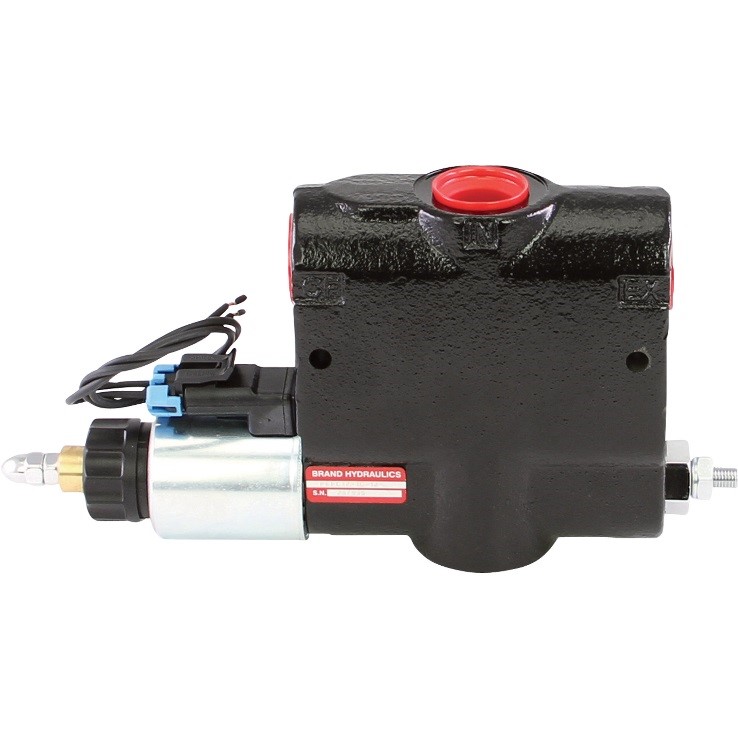Recognizing the Value of Control Valves in Process Automation
Recognizing the Value of Control Valves in Process Automation
Blog Article
Achieve Seamless Assimilation and Control With Quality Building Automation Controls
In the realm of contemporary structure management, the importance of top quality building automation controls can not be overstated. Welcoming quality building automation controls is not merely a matter of comfort yet a strategic imperative for organizations intending to optimize their centers' performance and sustainability.

Advancement of Structure Automation Controls
Throughout the past couple of decades, the development of building automation controls has dramatically changed the way buildings are managed and run. At first, constructing automation systems mostly concentrated on basic functions such as regulating ventilation, home heating, and air conditioning (HEATING AND COOLING) systems. However, as modern technology advanced, these controls have actually ended up being extra sophisticated, permitting for a larger range of building systems to be incorporated and taken care of centrally.
The advancement of constructing automation controls has seen a shift towards even more smart systems that can adjust to altering problems in real-time. This flexibility is vital for enhancing energy effectiveness and making sure resident convenience. Additionally, modern-day building automation controls now offer functions such as predictive upkeep, remote monitoring, and information analytics, enabling facility supervisors to make data-driven decisions to improve structure efficiency.

Benefits of Top Quality Integration
The improvement in structure automation regulates towards more intelligent systems has highlighted the substantial advantages of quality combination in maximizing structure procedures and enhancing general performance. Quality integration of constructing automation controls provides a number of key benefits. To start with, it leads to boosted power efficiency by allowing different systems to interact flawlessly, guaranteeing optimum efficiency and lowering power waste. High quality integration enhances owner convenience and productivity by enabling individualized control over ecological settings like lighting, temperature level, and air quality. This modification can lead to a more comfortable and conducive working or living setting. Furthermore, top quality combination simplifies upkeep and repairing processes, as all systems are adjoined and can be kept track of and regulated from a centralized user interface. This central control likewise provides much better presence and insights into structure performance, allowing aggressive maintenance and optimization approaches. In general, the advantages of quality integration in building automation controls are undeniable, supplying enhanced efficiency, convenience, and operational efficiency.
Improved User Experience and Accessibility
Enhancing user communication with building automation regulates with intuitive design and enhanced access elevates the total experience for passengers and center supervisors alike. By focusing on user experience, constructing automation systems can come to be a lot more effective and easy to use. Instinctive user interfaces, clear navigation, and adjustable settings encourage customers to engage with the controls conveniently and properly.
Access features play an essential role in ensuring that all people, including those with disabilities, can utilize the structure automation controls effortlessly. Integrating features such as voice commands, tactile switches, and color-contrasted displays can enhance ease of access and make the controls more inclusive.
In addition, enhanced customer experience leads to higher user complete satisfaction, enhanced performance, and much better decision-making. Passengers can readjust ecological settings according to their choices, while facility supervisors can successfully take care of and check structure systems - control valves. In general, prioritizing user experience and availability in building automation manages adds to a much more smooth and productive building atmosphere for all stakeholders entailed
Sustainable Practices Via Automation

Moreover, automation can help with the combination of eco-friendly energy sources such as solar panels or wind turbines into building operations. With automation, buildings can align with contemporary sustainability objectives and add to a greener future.
Future Trends in Structure Control Equipment
One noticeable pattern forming the future of building control systems is the raised combination of Artificial Knowledge (AI) and device learning. Furthermore, the Net of Things (IoT) is changing building control systems by attaching gadgets and sensors to enhance and improve operations effectiveness.
One more essential fad is the emphasis on cybersecurity measures to safeguard versus possible risks to developing automation systems. As buildings end up being a lot more interconnected, ensuring durable cybersecurity protocols will be important to guard delicate data and protect against unauthorized gain access to.
Moreover, the shift in the direction of cloud-based systems is acquiring energy, enabling for systematized control and remote accessibility to structure systems. This helps with much easier surveillance, upkeep, and updates, boosting the general efficiency and flexibility of building control systems. As innovation remains to breakthrough, these fads are anticipated to form the future landscape of structure automation controls, driving innovation and sustainability in the built environment.
Conclusion
Future fads in building control systems are likely to concentrate on further enhancing automation capacities for enhanced energy performance and total performance. It is important for building proprietors and operators to prioritize the adoption of top quality structure automation controls to maximize structure operations and achieve long-lasting sustainability goals.
In the world of contemporary building monitoring, the significance of top quality structure automation controls can not be overstated. Overall, the advancement of building automation manages continues to drive innovation in the structure management sector, providing brand-new possibilities for developing smarter and much more lasting structures.
The development in structure automation manages in the direction of even more intelligent systems has actually emphasized the considerable benefits of high quality combination in maximizing structure procedures and enhancing overall efficiency. Overall, prioritizing user experience and ease of access in building automation regulates contributes to a more efficient and smooth building atmosphere for all stakeholders involved.
It More hints is essential for building proprietors and operators to focus on the fostering of high quality structure automation you can find out more regulates to enhance structure procedures and accomplish lasting sustainability objectives. - control valves
Report this page